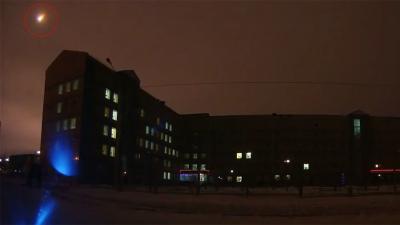The meteor that exploded over Siberia on Tuesday, December 6, 2016, could be up to 10 - 15 meters (33 - 50 feet) in diameter, Russian News Agency quoted a leading Russian space scientist.
"Obviously, the meteorite wasn’t big. Judging by the fact that it burned up or exploded before reaching surface, it’s obvious that it can hardly be more than 10 or 15 meters in size and that apparently it is not made of iron," Head scientist of Space Research Institute (IKI) of Russian Academy of Sciences Natan Eismont said.
This is far less in size than 20 - 40 m (65 - 131 feet) wide meteorite that exploded over Chelyabinsk in February 2013 and crashed into Lake Chebarkul.
The Novosibirsk Planetarium’s Director, Sergei Maslikov, told TASS on Wednesday that yesterday's object went undetected by ground telescopes as there are not enough astronomical observatories in Siberia.
"No one carries out astronomic research in that area, unfortunately. Krasnoyarsk is the closest city but there is neither a planetarium, nor an observatory there," he said.
Although it is still possible that this object did survive the entry and crashed somewhere in Khakassia province, the authorities still haven't identified its final location.
Presumably, it fell somewhere in the Babik valley near Sayanogorsk.
Featured image: Meteor explodes over Siberia, Russia on December 6, 2016.
Creative Commons Attribution-ShareAlike 3.0 Unported License



